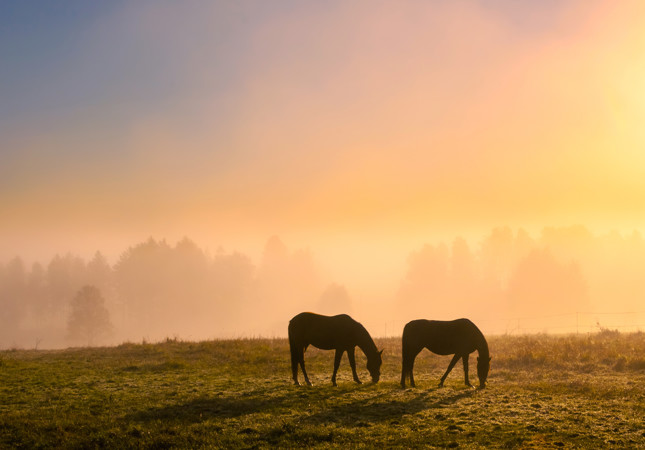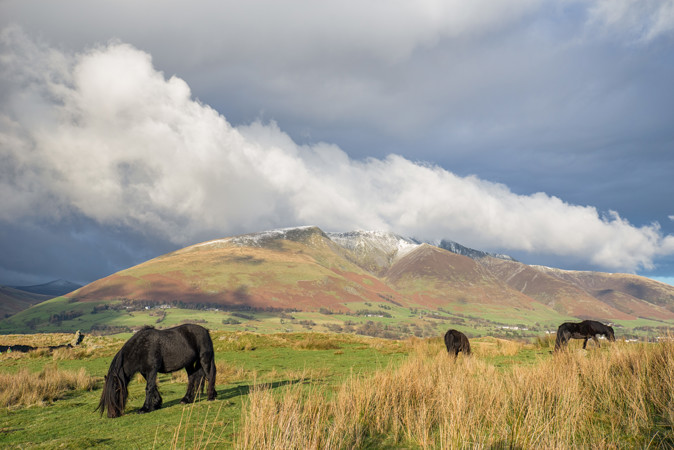Grass Sickness
24 Apr 2023



Recent work at Edinburgh University, Liverpool University and The Animal Health Trust (now closed) has led to the belief that Grass Sickness is caused by a neuro toxin which affects the nervous system causing failure of the whole intestinal system from the oesophagus down resulting in the paralysis of the gut.
Symptoms of EGS
Severe gut paralysis leads to signs of colic including rolling, pawing at the ground, and looking at the flanks, difficulty in swallowing and drooling of saliva. The stomach may become distended. If any dung is passed, the pellets are small, hard and may show a ‘cheesy’ coating of mucus. Fine muscle tremors and patchy sweating may also occur.
Chronic grass sickness cases can be more confusing but extreme weight loss, patchy sweating and muscle tremors combined with the difficulty eating and reduced droppings are big clues.
Diagnosis of EGS
The symptoms described above may seem quite clear-cut but unfortunately not all affected animals show all these signs and it can sometimes be very difficult for the vet to distinguish grass sickness from other causes of colic, difficulty in swallowing and weight loss. Also, there is no non-invasive test for diagnosing the disease in the live animal. Samples taken at surgery / post mortem will show the characteristic changes in the nerves for confirmation.
Treatment of EGS
In acute and sub-acute grass sickness treatment is not possible and affected horses may die, or can be euthanised to prevent further suffering. However, in chronic cases, if the animals are not in much pain, can still eat at least a small amount and are still interested in life, treatment can be attempted but not all chronic cases are treatable.
Treatment of chronic cases involves provision of palatable, easily swallowed food e.g., chopped vegetables, grass and high energy concentrates soaked in molasses. It is essential that high energy foods are consumed as chronic cases fed roughages and succulents alone will invariably die. Nursing is also vital and provides the mainstay of management. The patients require constant stimulation by human contact, frequent grooming to prevent them becoming scurfy and sticky with sweat and, in some cases, rugging which has been found to reduce sweating and prevent hypothermia.
Contrary to previously commonly held views that survivors did not return to a normal quality of life, we now have studies showing that 41% of recovered cases were back to normal work including hunting, racing, eventing, and hacking.
Risk Factors
Studies have identified some factors which increase or decrease the risk of getting EGS.Increased Risk
- Pasture – grazing pasture where previous cases have occurred.
- Horses kept solely at grass, with no stabling or access to supplementary forage.
- Age of horse - most are 2-7 but can be any age with a peak at 3-4 years.
- Time of year - most cases are seen in in April- July (with a peak in May) and again in the autumn, September - October. There are often more cases after a period of dry cool weather, 7-11°C for more than 10 days.
- Type of premises - more common on premises with increased number of horses on pasture.
- Recent stress - travelling, moving yards, mixing groups of horses, breaking, castration all increase the risk of EGS.
- Recent soil disturbance - e.g., construction, pipe laying, poached gateways, or close grazing.
- Worming – over use of certain classes of wormer.
- Use of medication – particularly antibiotics as they affect gut bacteria.
- Animals in good to fat condition also appear to be pre disposed.
Decreased Risk
- Regular grass cutting on pastures decreases risk.
- Worming / antibiotics - If worming or antibiotics are needed, give a pre/probiotic to maintain healthy gut flora.
- Stabling - time off the grass for even part of the day and supplementary feeding of forage is protective.
- Removal of droppings - manual dropping removal from pasture decreases risk.
- Co-grazing with cattle and sheep is protective
Further Information
For more information on grass sickness or to donate to the ongoing research into this devastating disease which has touched the lives of so many horse owners visit the Equine Grass Sickness Fund website by clicking the link below.